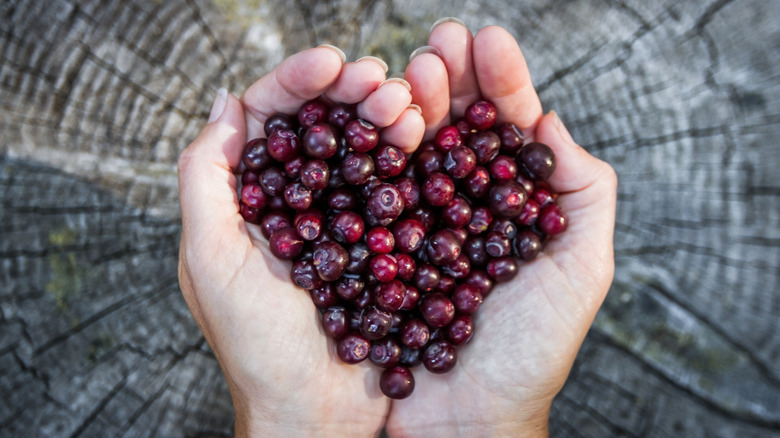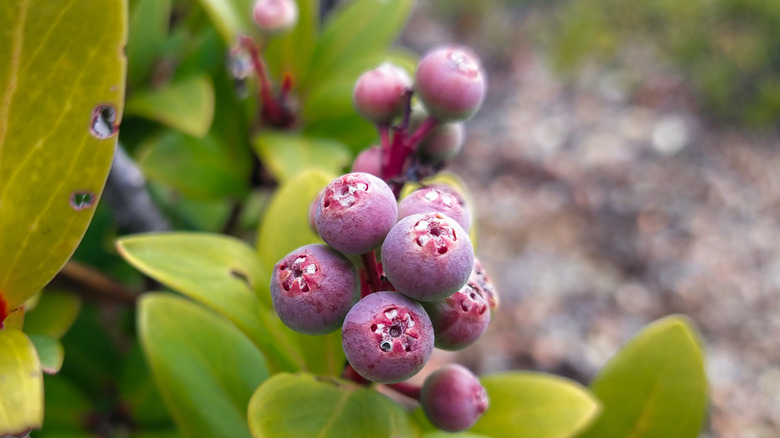How The Huckleberry Became The Official Fruit Of 2 US States
If asked what the first food you thought of when you thought of Idaho, you'd probably say potatoes. The first for Montana? Probably beef. What you wouldn't expect is for the two states, known for such hardy foods, to also be associated with a small, delicate fruit that grows in relatively small volumes during its short summer season. But the huckleberry, the tiny reddish blue fruit that looks and tastes very much like a blueberry, is actually endemic to the mountains of the Northwest United States. So, it's no wonder both states wanted to claim the berry as their own.
Huckleberries became the state fruit of Idaho in 2000 and achieved the same status in Montana in 2023. As is the case with the naming of many state symbols, the idea to declare the fruit the state fruit came from elementary school students working with state lawmakers to move it through the legislative process. Idaho and Montana are not the only two states to share a state fruit: both Alabama and Georgia lay claim to the peach. There are multiple states that claim apples, strawberries, and grapes, but have selected a specific variety of those fruits as their own. Oklahoma wasn't happy with just having strawberries as its official fruit; the state stretched the rules a bit by naming watermelons its official vegetable.
Huckleberries love the mountains of the Northwest
Huckleberries grow best in high-altitude areas. In addition to Idaho and Montana, huckleberries also grow in Washington state (where, no surprise, the state fruit is the apple). Huckleberries are difficult to impossible to cultivate, and, as a result, their availability is limited. They grow wild on bushes during the summer months and can be harvested by mid- to late-August – but only by handpicking. The bushes themselves take up to 15 years to mature. Unlike blueberries, which grow fruit in clusters that are easier to harvest, huckleberries grow individually, making the yield from a huckleberry bush relatively small.
Like wild blueberries, huckleberries have a lot of similarities to, yet also key differences from, cultivated blueberries. Like blueberries, huckleberries are packed with antioxidants. Along with bison, avocados, and the prickly pear, huckleberries are considered one of the healthiest foods grown in the American West. Both blueberries and huckleberries have seeds, but huckleberries have several hard seeds that give the berries a slight bitterness. Huckleberries are also more tart and less sweet than blueberries. Even so, Montanans and Idahoans alike love huckleberries in a variety of foods, including jams, pies, ice cream, and pancakes. It's no surprise that both wanted to name these hard-to-find berries their state fruit.


